Grab the Metering Modes Guide
Grab our free metering guide below to know which modes suit which shooting scenario... all in a handy checklist for when you’re out shooting.
When the snow starts falling, that all-white winter wonderland is an exciting opportunity for snow pictures!
Think sparkling eyes, apple cheeks pink with cold, beautiful texture in the form of warm woollies. Add pops of vibrant colour, and it’s easy to create really eye-catching, dynamic snow images with a big wow factor!
But when it comes to shooting in the snow, there are a few things to consider which are unique to any other location.
Click Love Grow Advanced Photography Course graduate Melanie Nebbeling took her daughters out for some snow portraits last month, and, together, we came up with 7 essential tips to nail snow photography.
Not wanting to state the obvious…but it’s cold out there! You should assume your subjects will have a shorter window than any other time. Also, if the sun comes out, snow will start melting quickly!
So before you leave the warmth of the indoors, make a plan of the snow pictures you want to get. Even if it’s just a mental list. That way, you can get out, get the pics, and get back inside to some hot chocolate!
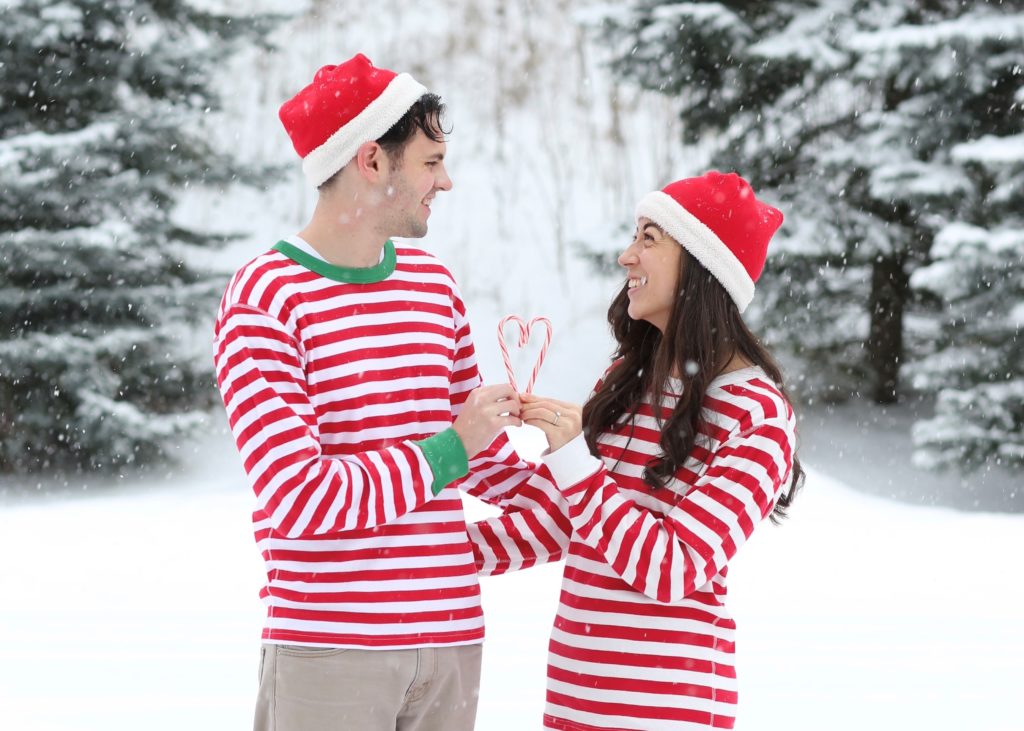
Try to head out after a recent fall, when the snow is fresh and the landscape is pure white. Nothing will ruin your magical snow pictures more than dirty, slushy snow!
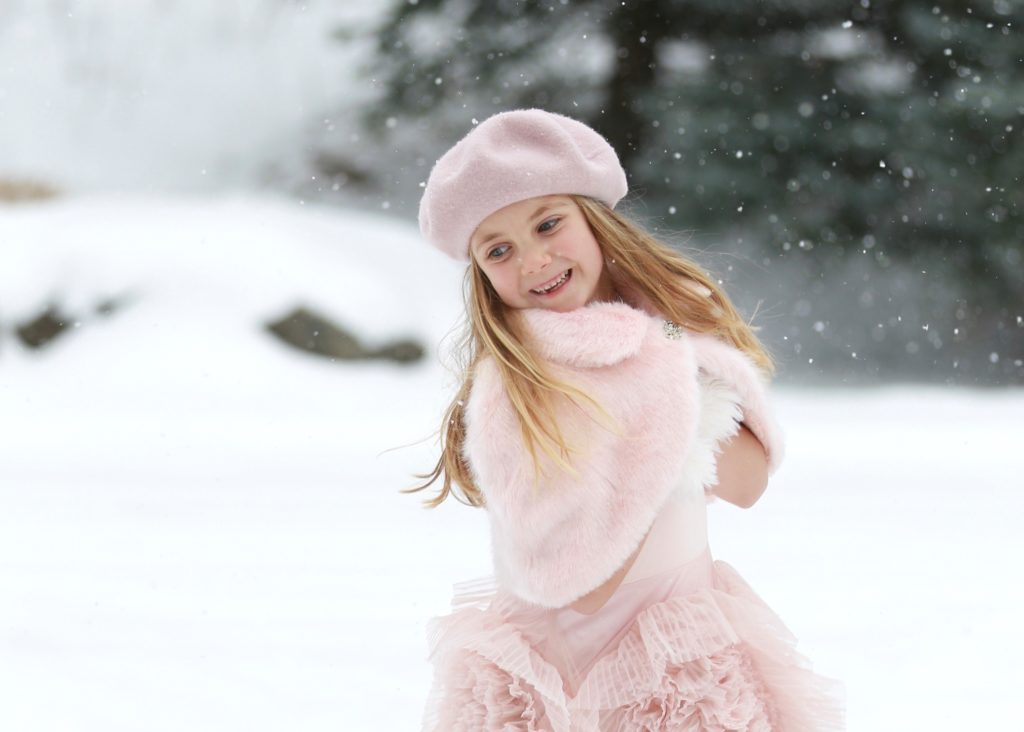
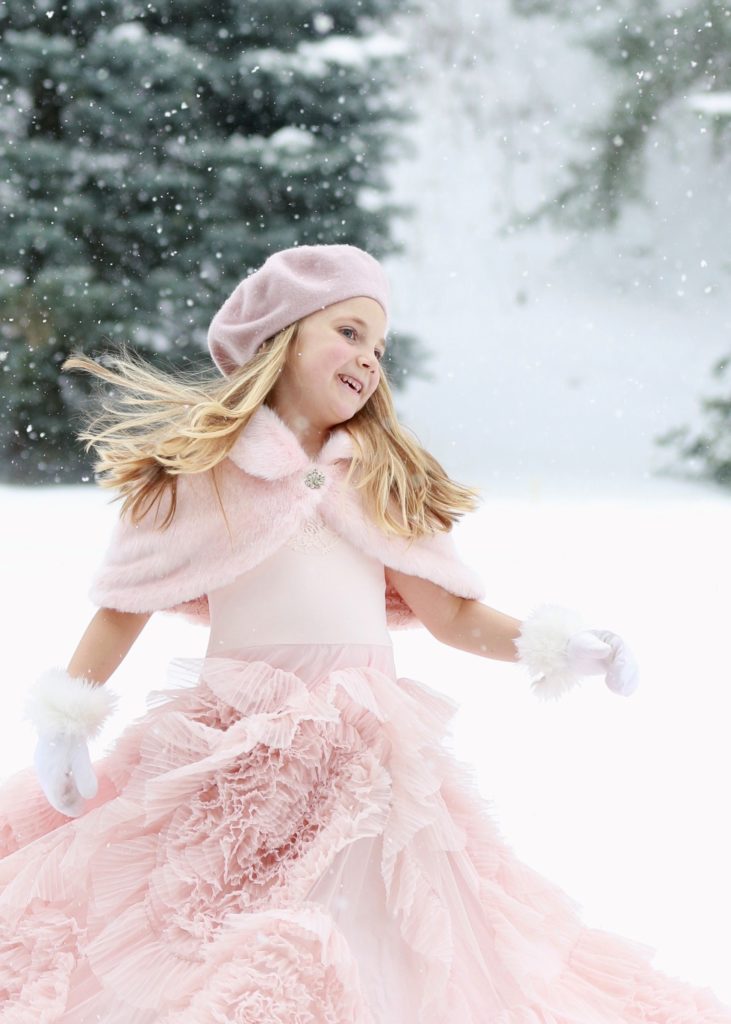
Snow acts as a natural reflector, bouncing light all around. That’s a big reflector and a lot of light! For that reason, avoid harsh, unflattering light falling on your subject by shooting the portraits in soft light.
Overcast skies will give you soft light, so, in instances where you have clear skies and full sun, aim to shoot during the golden hours.
Related: 8 Surprising Ways to Use Backlight for Creative Photos
Generally speaking, your settings for shooting pictures in the snow will be no different from any other location. By that, I mean you’ll still choose them based on the look you’re after and the speed of motion you want to freeze or capture.
For an action photo like this, use a shutter speed of no slower than 1/500.
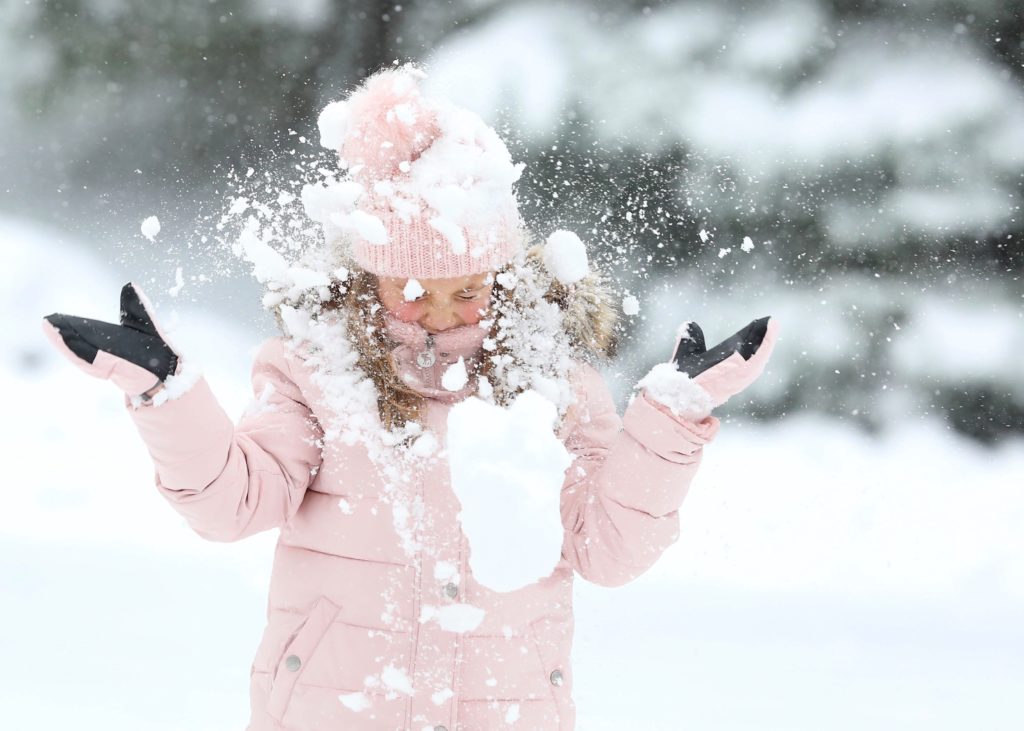
You can also create different effects with the snowfall using your shutter speed. Even if your subject is not in motion, use a fast shutter speed to capture sharply defined snowflakes.
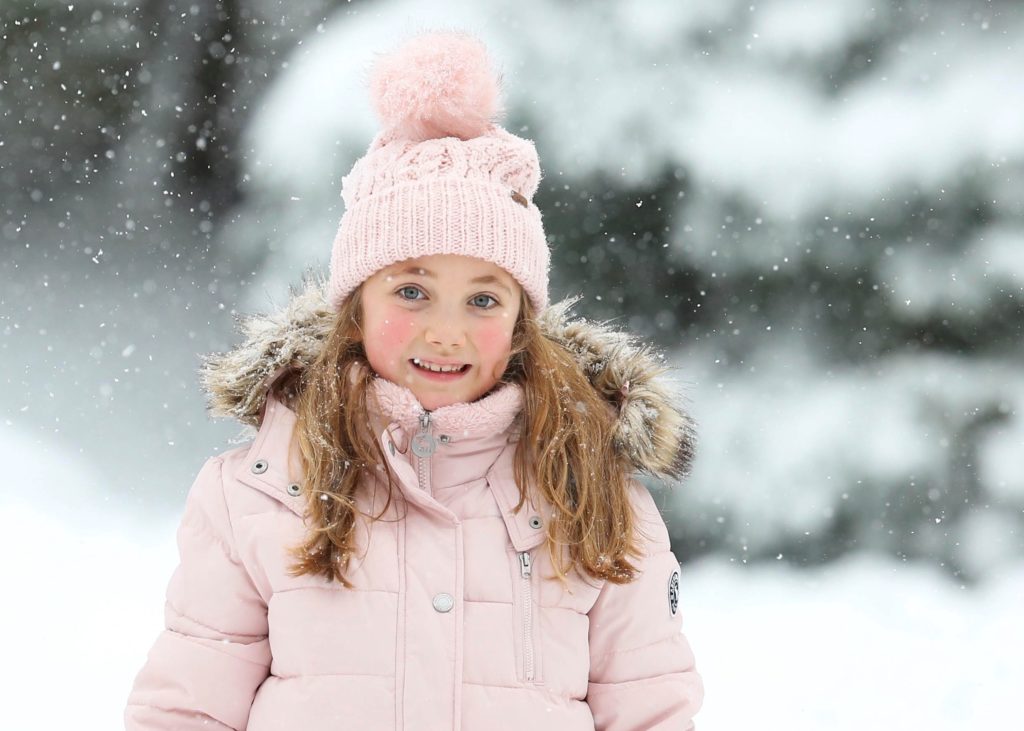
To capture the motion of snow falling as in the shot below, use a slower shutter speed. Try 1/100 as a starting point, review and zoom in on your image and decide if you need to adjust.
You can create a streaky effect with the snowfall by using an even slower shutter speed. Just remember, in doing this, you’ll also capture the blur of your subject if they’re in the shot and they’re in motion. So you’ll need to ask them to freeze, then experiment to see what works best.
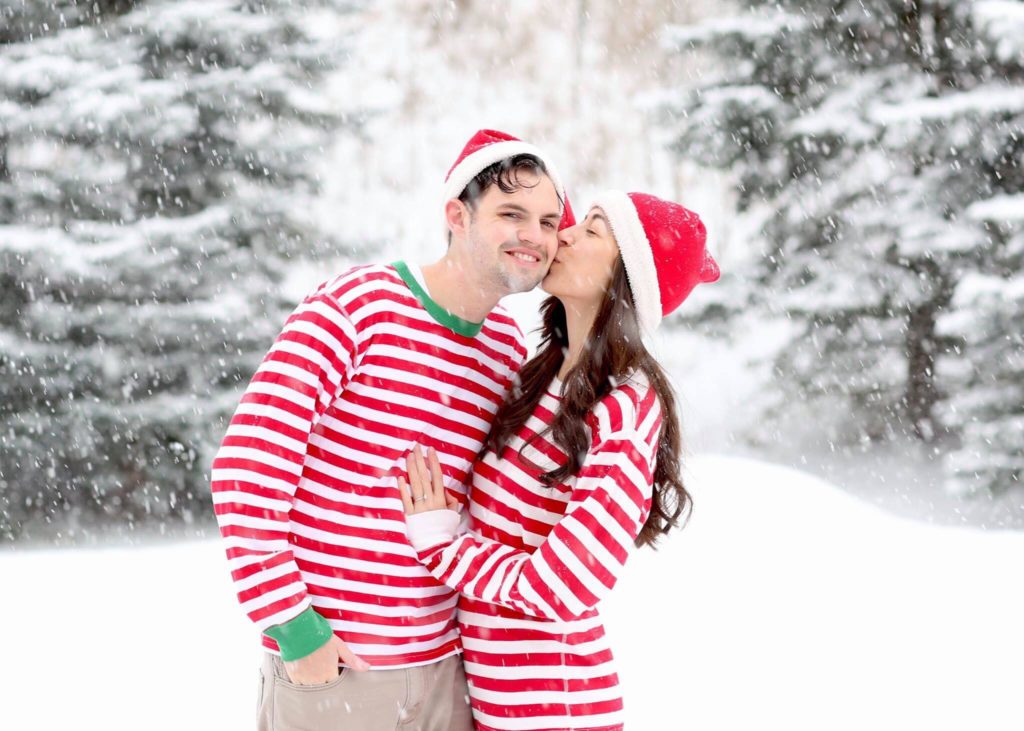
Create gorgeous snow bokeh by using a wide aperture. The wider the aperture, the better your bokeh! Start with around f/3.5 and focus on your subject, review and adjust if needed.
If you want lots of snowflakes in focus, use a narrow aperture of, say, f/11.
Related: How to Get Blurred Backgrounds In Photos With a Kit Lens
With all that white around, your camera will be tricked into thinking it needs to expose darker to get a correct exposure. The result will be snow pictures with an underexposed subject.
If you think your meter is underexposing, don’t be afraid to push it lighter to properly expose your subject. You can do this by simply using your eye to overexpose a touch.
Use spot metering, aiming at your subject’s skin for the best chance at the correct exposure. Take a test shot and review the quality of your image.
Alternatively, if you like to rely on your in-camera metering, you can use exposure compensation. I much prefer the eye method, because (as I always say) the meter is just a guide.
Related: What is Metering?
CLICK HERE to download our guide to metering modes to help you know which mode will help achieve the best exposure for your shot
CLICK HERE to download our guide to metering modes to help you know which mode will help achieve the best exposure for your shot
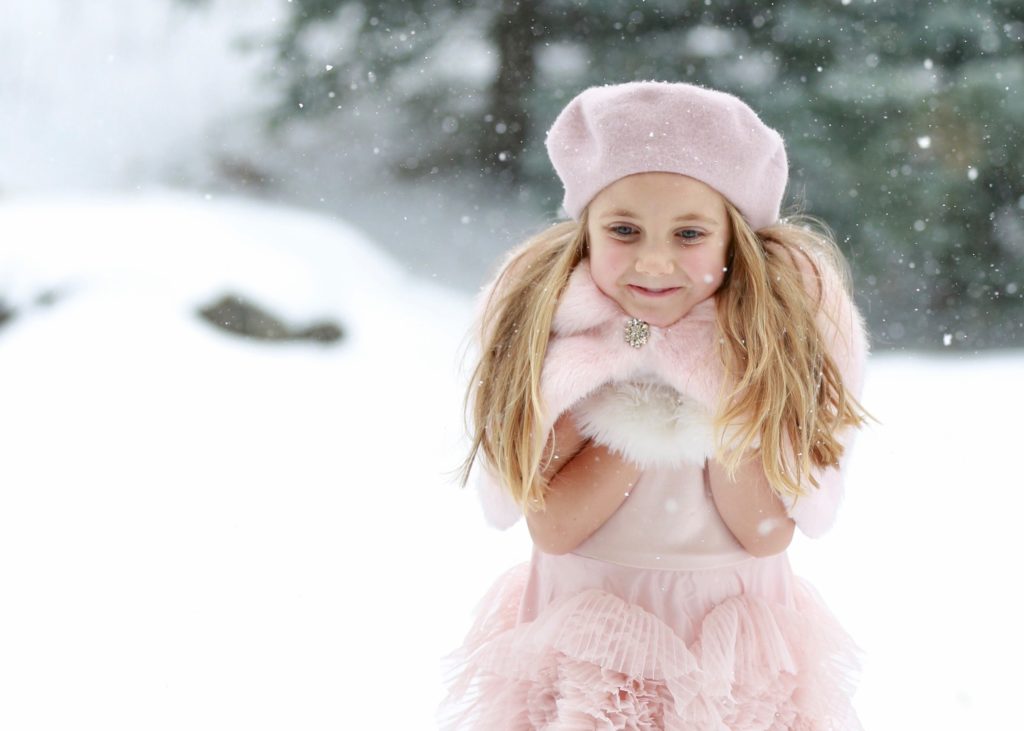
Melanie uses a Canon 5D Mk3 with an 85mm f1.2, 135mm f/2 and a 200mm f/2.0. She says she loves using the longer focal lengths to shoot snow portraits in her own driveway, as the compression makes it look like a snow-filled forest!

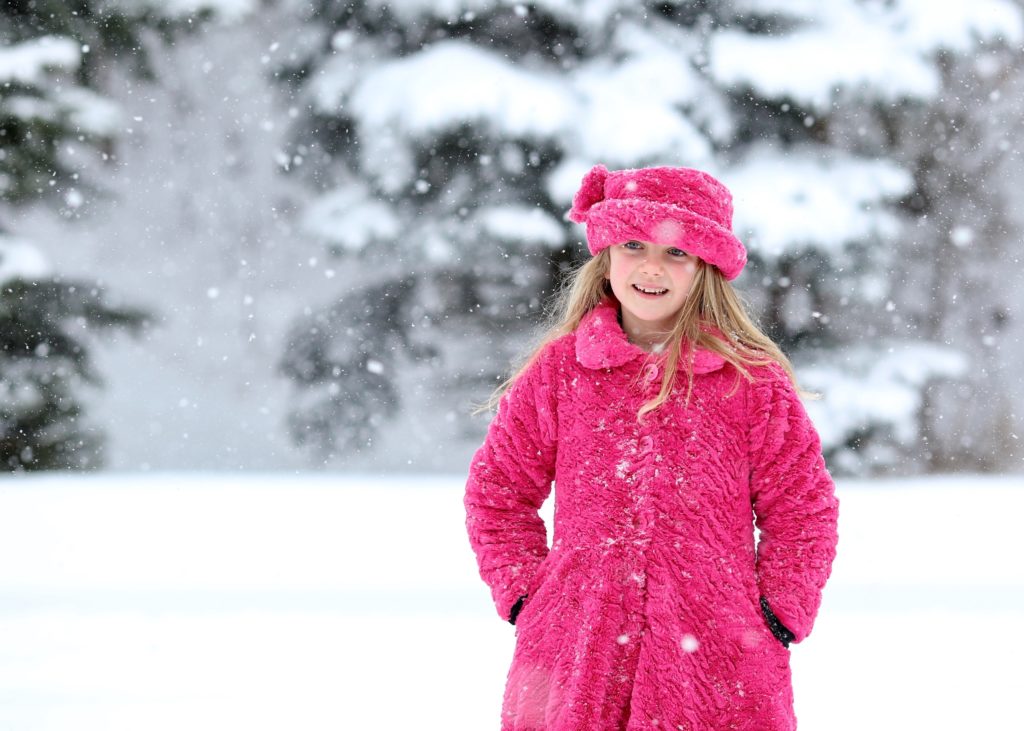
Battery life is noticeably affected when shooting in such extremely cold temperatures. So keep a spare on hand, and keep it warm in your pocket until you need it.
Anything for the shot? Well, almost anything. Expensive camera gear + moisture is asking for trouble!
If you want to shoot during a snowfall, you need to protect your gear. Ideally, you’d have someone holding an umbrella over you whilst you shoot. If you don’t have a handy assistant, you’ll need to try to shoot one-handed to keep your other hand free to hold your own umbrella!
Alternatively, if your car is nearby, sit inside and shoot out the open window. As you can see in the image above, Melanie shoots down her own driveway, from her open garage doorway. This provides relative warmth and better protection for her gear. It also means she can shoot whilst it’s snowing, without fear her gear will get wet.
Exposing your gear to extreme temperature changes can cause condensation inside your camera and lenses. Over time, this can damage their inner workings…an expensive mistake!
Avoid this by placing it in a plastic bag the second you return, ensuring it’s airtight so that condensation can’t form. A properly sealed zip lock bag works well. Leave it stored inside the bag until it’s had a chance to return to room temperature.
It’s not always possible, but ideally, you should try to store the bag for a time in a cooler indoor area…placing it next to a roaring log fire is not a great idea!
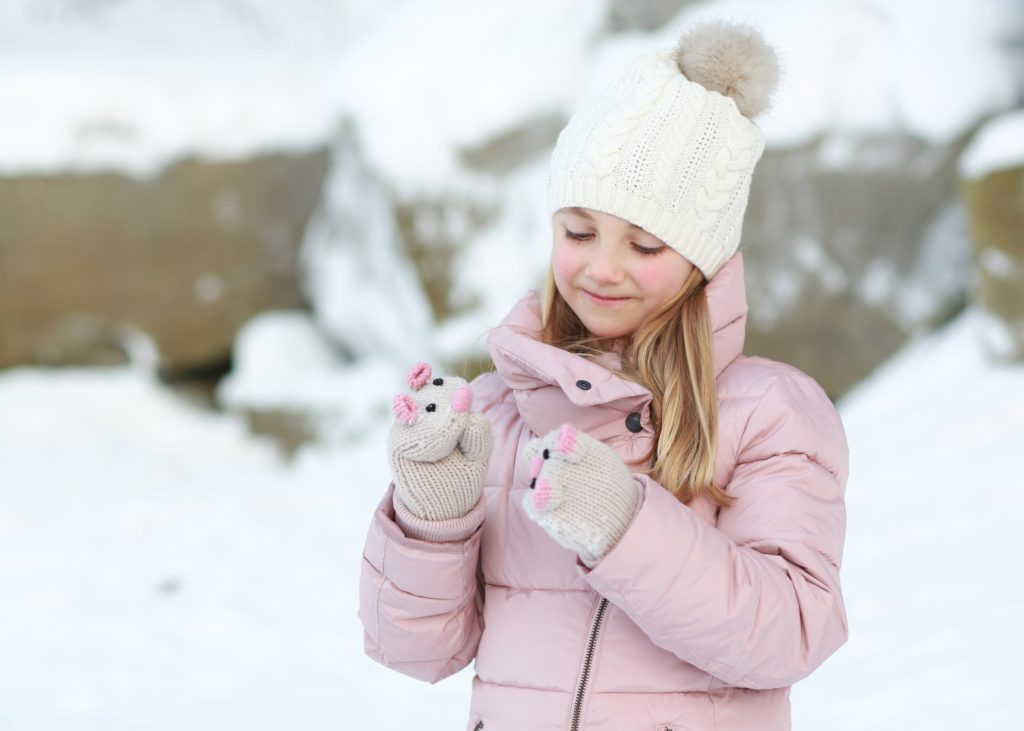

Including vibrant colour adds a really dynamic element to snow pictures. Red and pink look amazing in the snow, especially during the Christmas season.
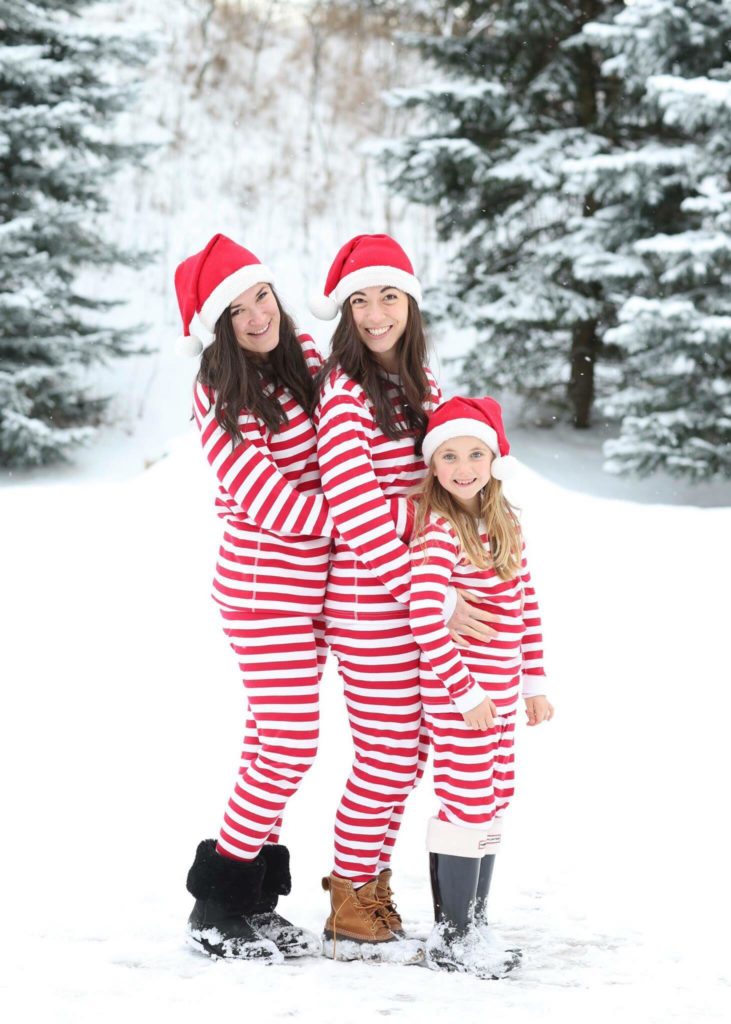
That said…black and white is not to be disregarded! Look at how these conversions really highlight texture, isolate the snowfall, and render the background a beautiful canvas from which her subject can pop!
Related: 12 Stunning Black & White Portraits
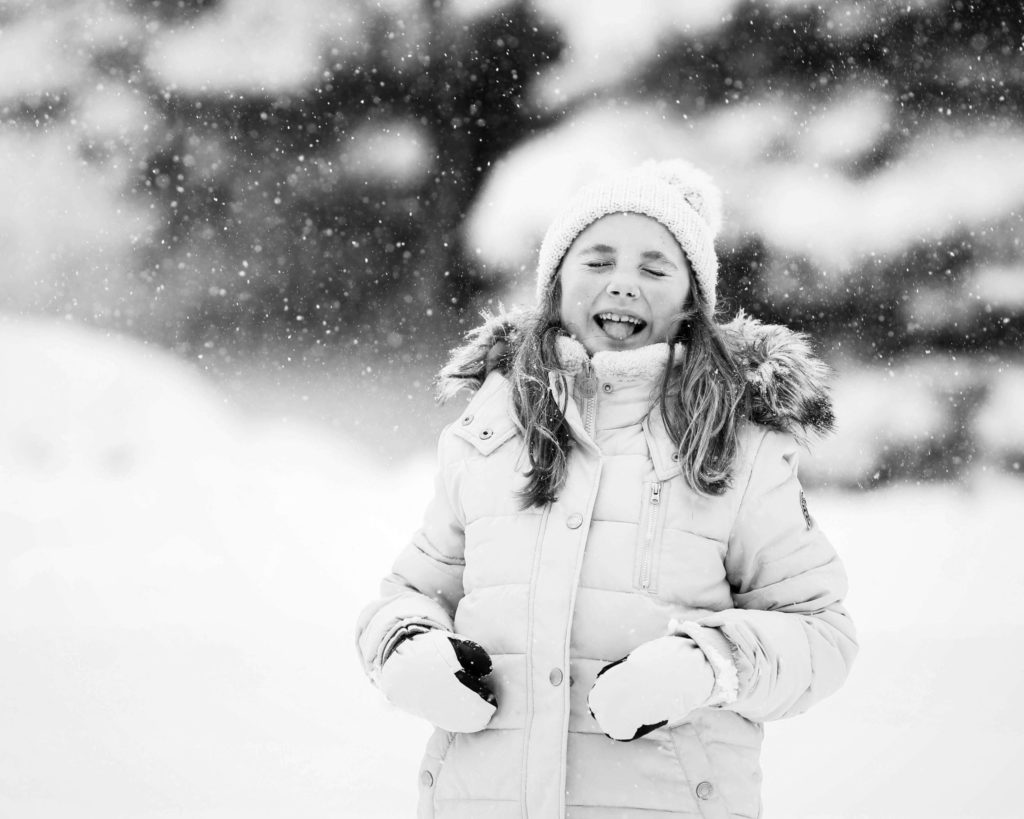
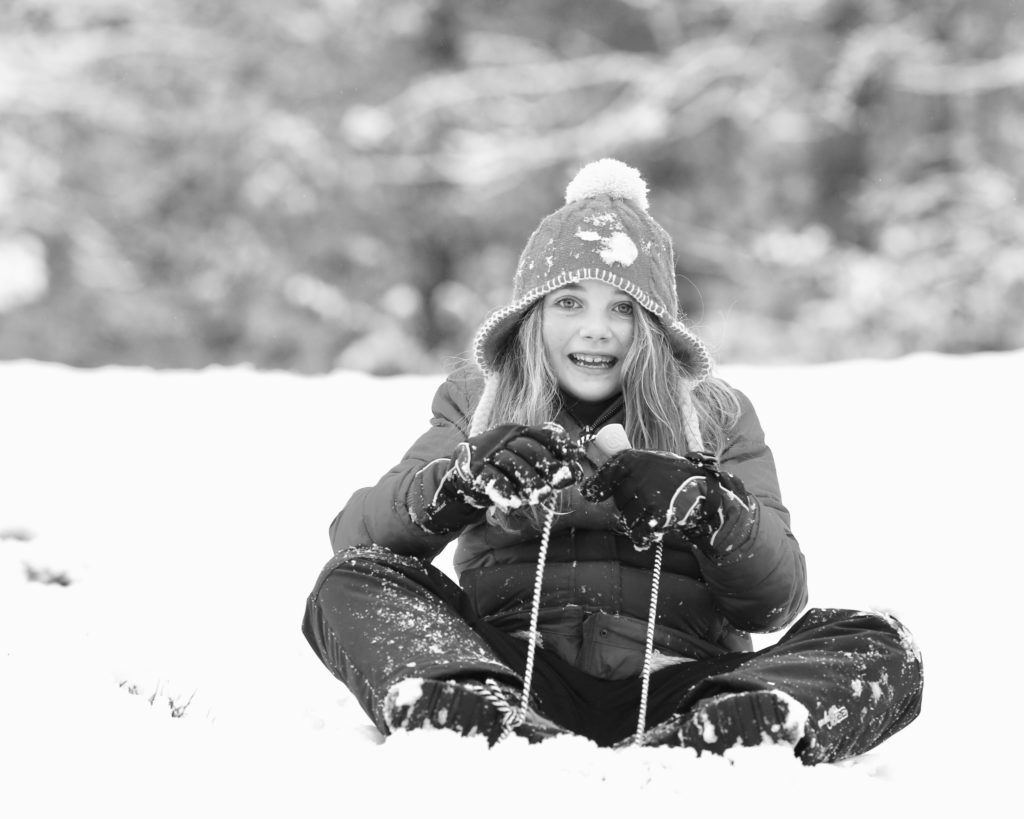
We hope these tips help you get out and take some gorgeous snow pictures! If you’re heading to more extreme temperatures and weather conditions, try our post about shooting winter landscapes.
Related: Winter Landscapes
Ready to up-level your photography?
Find out about our Advanced Photography Course starting soon...

CLICK LOVE GROW ™ Pty Ltd - COPYRIGHT 2024 ©
Enter your info below to join the challenge!
Want a friendly reminder when I go live?
Pop in your number and I’ll shoot you a text.
* We will send text reminders for our live calls during the challenge! Reply ‘STOP’ to end or ‘HELP’ for help.
We promise not to ever share your details with anyone or send you spam! Check our privacy policy and terms of service.
Grab the Metering Modes Guide
Grab our free metering guide below to know which modes suit which shooting scenario... all in a handy checklist for when you’re out shooting.
These are some valuable tips on capturing snow pictures! I think the color tip is probably the best tip – snow can definitely drown out your color so adding some color will help make your images pop!